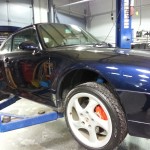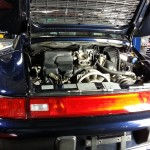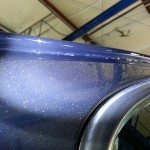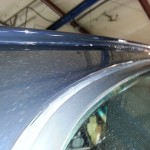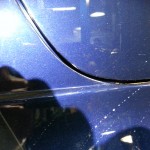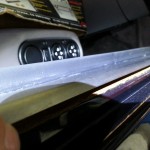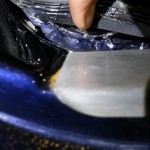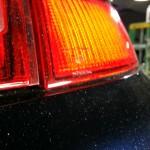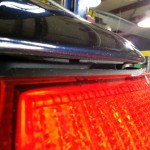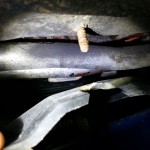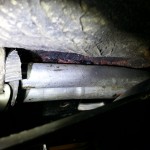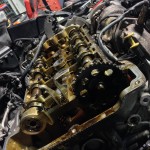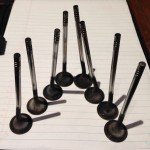We love to see avid enthusiast and daily commuters alike get new cars. Being excited about the purchase, and having good knowledge their dream car is just that, not a nightmare.
For years, we have been doing PPIs (Pre-Purchase Inspections) to help buyer confidently put down healthy sums with confidence. With the desirability of some of the air-cooled Porsche makes we have see values climb at a staggering rate, and the number available shrink leaving the price to go up. With this elevation of desire and market value comes the wild claims of originality, and people trying to sell through dishonesty and misrepresentation. Recently, we had a vehicle come in to our shop that illustrates this very well.
We received a call from Texas to help a gentleman out who had found his dream Midnight Blue Porsche 993 Turbo here in the region. It really was a stunning car, and it’s no wonder why these beautiful cars continue to climb in value. At initial glance, it was a clean car that was not being sold as a salvage title or was sold as wrecked. No damage really to speak of, it was seemed to be an honest car. Clean Car Fax with no indication of collision.
With the PPI process we look over the vehicles with keen eye on the details, corners, any over-spray especially in the rocker panel regions or place where their are post-paint body plugs. These areas can tell many stories about the past of a car. The car was being listed at approximately $90,000 USD, and was high for the market. This was not being listed by a private owner, but a business.
This is what we found:
- Passenger Side
- Driver Side
- Engine Bay
Rain Guards: Tack-welds the entire length when they should be smooth. This indicates that, at one point, the car had been split at the seam to allow a panel replacement.
- Drip rail
- Drip rail
Door/Door Sills: The sills had a bump/step in them likely from the replacement panel overlap. The door gap wasn’t uniform. Under the door sill was where shops will hide the welds… we found welds.
- Door gap
- Door sill
- Repaired Seam (Door Sill)
Back deck Rail: Where the rear quarter panel meets the trunk stamping it was not factory clean spot welds, but a smoothed over area with body filler to hide the repair. In addition, this area had paint cracking the entire length.
- Seal Gap
- Seal doesn’t seal
- Gap from panel fit.
Tail Lights: The three lights that make up the rear didn’t align properly, and was a clear indicator that the angle of one panel in the replacement wan’t quite perfect. The passenger side rubber gasket wasn’t touching the body to seal this area. In stead the gap was too large, and not able to be rectified correctly.
- Poor Fitting Tail Lights
- Seal Gap
- Gap
Rocker Panels: The rockers revealed non-factory over-spray that had been sprayed over air-conditioning lines. These are installed after paint at the factory and should be clean, bare aluminum. There we found the primered replacement panel fresh edge that didn’t receive paint. This is a key indicator that this car was clearly wrecked.
- Over-spray on A/C lines
- Non-Factory Primered Panel
- Exposed Primer
After deliberation, we called the client to tell them the news. We advised to not perform a leak-down test on the engine after this gross misrepresentation. He was clearly disappointed with the findings, however, he saved money by not performing the leak-down test, and furthermore, tens of thousands of dollars in a car that is not worth the asking price.
The following day we performed a Post-Purchase Inspection for a young man that had purchased his first M3. The car was a great deal to begin with, and he needed and oil change. He had P3 Autokräfte inspect the car, and insure that he had a solid car to start with, and let him know if there was anything that needed addressing. He had found a quality car. Money well spend, and good peace-of-mind.
If you are looking at a used vehicle please let us know how we can help insure that you receiving the car of your dreams.
Call today 937.312.9950 to schedule an appointment for inspection of your newest love to insure that it was meant to be.
 7979 S Suburban Rd, Centerville, OH 45458
7979 S Suburban Rd, Centerville, OH 45458
